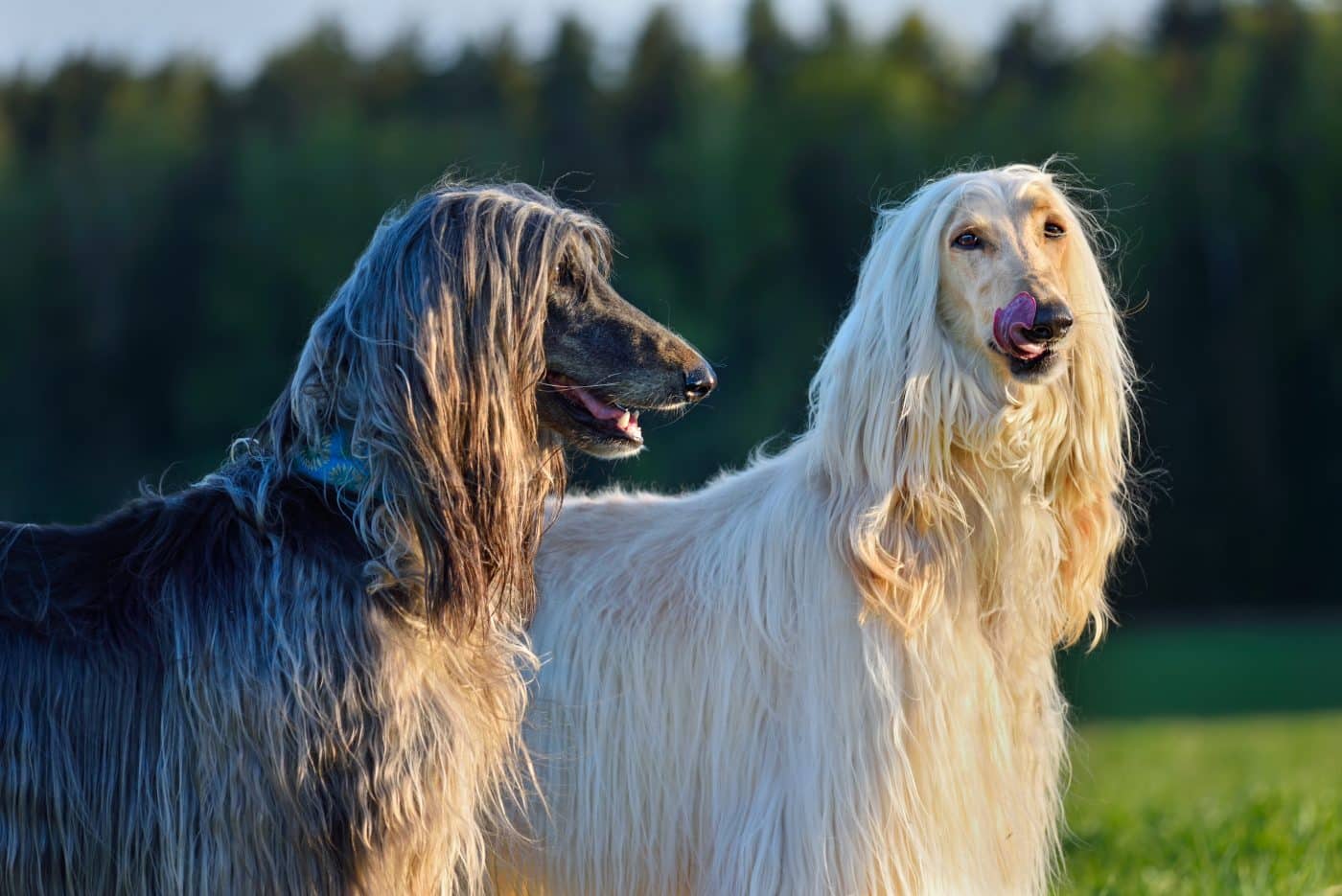

Some dogs are worth their weight in gold—or at least, they used to be. Before credit cards and cryptocurrency, certain breeds were so prized, that they were used as currency or gifted like rare treasures. These weren’t your average pups; they were status symbols, diplomatic gifts, and walking fortunes. These breeds commanded value that went far beyond belly rubs and biscuits. Royalty swapped them, empires coveted them, and some were even protected by laws to ensure only the elite could claim ownership. These dogs didn’t just fetch—they were what people fetched.
Tibetan Mastiff

In ancient Tibet, this massive, lion-like dog wasn’t just a protector of livestock—it was a walking status symbol. The Tibetan Mastiff was so rare and prized that it was often gifted to royalty and used in dowries or high-stakes trades. Its value was legendary, with some even believed to embody the spirit of Tibetan guardians. In more recent times, one sold for nearly $2 million in China, proving its golden reputation still stands. This dog was the OG luxury item.
Saluki

Often referred to as the “Royal Dog of Egypt,” the Saluki was so revered that owning one was once limited to nobility. These sleek, graceful hunters were gifted between kings and pharaohs like precious gems. Mummified remains of Salukis have been found in Egyptian tombs, showing just how deeply they were treasured. Their elegant frame and loyal temperament made them living works of art, valued not just for their abilities, but for their divine connection to royalty. If this dog came with a price tag, it was somewhere between sacred and priceless.
Chow Chow

In ancient China, the Chow Chow wasn’t just a fluffy companion—it was practically a living coin purse. Emperors gifted them as tokens of favor, and their ownership was strictly regulated by class. Highly prized for their distinct appearance and loyalty, they were even featured in ancient art and writings. These dogs could be traded for livestock, land, or luxurious goods. With their lion-like mane and aloof majesty, it’s no wonder they were treated like fur-covered currency.
Lhasa Apso

The Lhasa Apso was bred exclusively by Tibetan monks and nobility to serve as watchdogs for palaces and monasteries. They weren’t sold—they were gifted, often to emperors or as part of royal alliances. These dogs were considered sacred and believed to house the souls of reincarnated monks. Because of this spiritual value, owning a Lhasa Apso was like being entrusted with a divine treasure. If you had a Lhasa Apso, you were somebody.
Basenji

Originating in Central Africa, the Basenji were so valued that ancient tribes traded them like prized commodities. They were gifted to pharaohs and nobles and held in such high regard that they were depicted in ancient art and buried with humans. These barkless wonders were prized for their intelligence, hunting skills, and mystique. They weren’t just pets—they were prestige wrapped in a curly tail and sleek coat.
Pekingese

The Pekingese were so treasured by Chinese royalty that commoners were forbidden from owning them. They were considered imperial treasures and were often included in the emperor’s dowry gifts. If one was stolen or harmed, the punishment could be as severe as death—yes, death. These tiny dogs were treated more like divine artifacts than animals, living luxurious lives inside palaces and even having their guards. You could say they were the ancient version of the crown jewels—only fluffier.
Akita Inu

The Akita was once gifted by the Japanese Imperial family to signify honor and prosperity. They were so highly valued that owning one was seen as a mark of distinction. In feudal Japan, they were traded among the nobility as tokens of goodwill and loyalty. Trained to guard royalty and hunt formidable prey like boar and bear, Akitas carried a hefty cultural weight. Their spiritual and social value turned them into four-legged diplomatic gifts.
Afghan Hound

The Afghan Hound’s flowing locks and regal air made it a luxury in ancient times. Originating in the mountains of Afghanistan, this breed was so rare that it was used in trade by tribal leaders and nobles. Their ability to navigate rugged terrain made them prized hunting companions, but it was their exotic elegance that made them coveted status symbols. To give or receive an Afghan Hound was like exchanging fine art—only with more barking.
Xoloitzcuintli (Mexican Hairless Dog)

In ancient Aztec and Toltec civilizations, the Xoloitzcuintli was not only considered sacred—it was used in rituals, healing practices, and even trade. This unique hairless breed was believed to guide souls to the afterlife and was often buried with their owners. They were highly valuable due to their spiritual significance and practical uses, such as keeping warm in bed (ancient hot water bottles, anyone?). You weren’t just buying a dog—you were investing in divine protection.
The Investment That Demanded Belly Rub

Turns out, man’s best friend was also man’s most valuable asset—and in some cases, more valuable than gold, jewels, or even livestock. These pups weren’t just companions; they were currency, diplomatic gifts, and prized possessions that royalty and warriors alike bragged about. They trotted through palaces, slept on embroidered pillows, and lived like four-legged bank vaults. These breeds weren’t just petted—they were paid, praised, and pedestal-ed like the VIPs they’ve always known they were. Honestly, some probably still expect tribute in the form of treats.
The post 9 Dog Breeds That Were Used As Currency Or Valued Like Treasure In The Past appeared first on iHeartDogs.com.